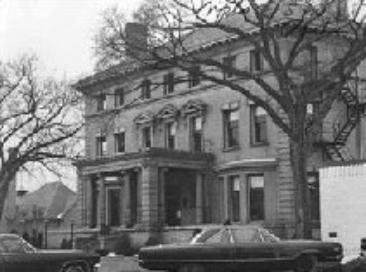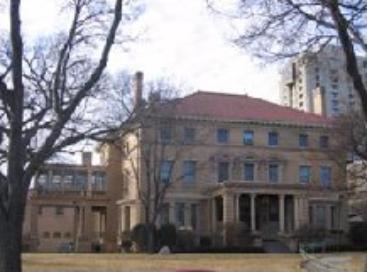Overview
The Harrington House is an example of an urban estate built on Park Avenue. This grand Italian Renaissance Revival house was built for Charles M. Harrington.
- Location: 2540 Park Avenue
- Neighborhood: Phillips West
| 1963 | 2006 |
|---|---|

|

|
The Harrington House is an example of an urban estate built on Park Avenue. This grand Italian Renaissance Revival house was built for Charles M. Harrington.
| 1963 | 2006 |
|---|---|

|

|
The Harrington House is an example of an urban estate built on Park Avenue. This grand Italian Renaissance Revival house was built for Charles M. Harrington and his wife Grace. Harrington moved to Minnesota in 1871 at the age of 16. By 1889, he was president of the Van Dusen-Harrington Company, one of the largest grain firms of that time. He was one of the wealthiest people in Minneapolis and very active in civic life. He served as president of the Minneapolis Chamber of Commerce.
He chose to build a home on Park Avenue where other wealthy Minneapolitans had also built homes. Park Avenue is a wide street with large lots and generous setbacks. They were able to build homes to look like country estates but remain close to the city. Harrington hired prominent architects Kees and Colburn to design his house. Kees and Colburn had worked on several notable buildings, including the Grain Exchange.
The house’s red tile roof is a key trait of the Italian Renaissance Revival style, along with other features. It also has Ionic columns on the porch and porte-cochere and pediments above some windows. At the corners of the building, there are brick quoins. Under the eaves, there are scroll brackets and dentils. There is a two-story carriage house behind the house that was designed in a similar style. Over time, additions have been built between the house and the carriage house.
The Shriners bought the house in 1929 and used it as the Zuhrah Shrine Center. It is now part of the Saint Mary’s University of Minnesota campus.
"Local Heritage Preservation Designation Study: Charles M. Harrington House," July 1988
Community Planning & Economic Development (CPED)
Phone
Address
Public Service Building
505 Fourth Ave. S., Room 320
Minneapolis, MN 55415